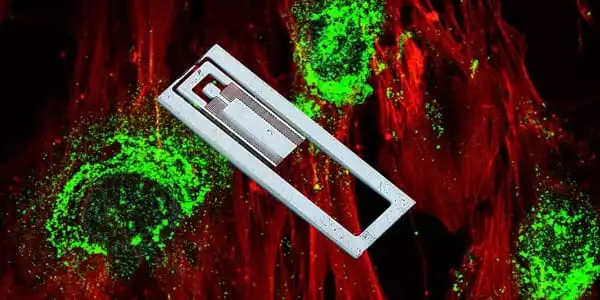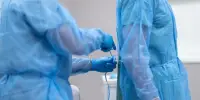Sound waves were used by researchers to convert stem cells into bone cells, in a tissue engineering breakthrough that could one day help patients regrow bone lost to cancer or degenerative disease. Through the precision power of high-frequency sound waves, researchers at RMIT University in Melbourne, Australia, have developed an innovative stem cell treatment that offers a smart way forward for overcoming some of the field’s most difficult challenges.
Scientists from Australia’s Royal Melbourne Institute of Technology have been able to regrow bone by firing high-frequency sound waves at stem cells, which could lead to a breakthrough in regenerative medicine. The best part, they claim, is that it is faster, more efficient, and less expensive than existing experimental methods of regrowing bone using stem cells extracted from bone marrow, which can be a painful and invasive process.
Tissue engineering is a new field that seeks to rebuild bone and muscle by utilizing the human body’s natural ability to heal itself. The need for large amounts of bone cells that will thrive and flourish once implanted in the target area is a significant challenge in bone regrowth.
In a blurb about the research, Amy Gelmi, RMIT research fellow and co-author of a paper about the research published in the journal Small, said, “The sound waves cut the treatment time usually required to get stem cells to begin to turn into bone cells by several days.” “This method also does not require any special ‘bone-inducing’ drugs and is extremely simple to apply to stem cells.”
We can use sound waves to apply just the right amount of pressure to the stem cells in the right places to trigger the change process. Because our device is inexpensive and simple to use, it could easily be scaled up to treat large numbers of cells at the same time, which is critical for effective tissue engineering.
Professor Leslie Yeo
“Because our device is inexpensive and simple to use, it could easily be scaled up to treat large numbers of cells at the same time — essential for effective tissue engineering,” coauthor and MRIT professor Leslie Yeo said in a statement. To date, experimental processes for transforming adult stem cells into bone cells have relied on complex and expensive equipment and have struggled with mass production, making widespread clinical application unrealistic.
Furthermore, the few clinical trials that have attempted to regrow bone have largely used stem cells extracted from a patient’s bone marrow – a painful procedure. The RMIT research team demonstrated that stem cells treated with high-frequency sound waves quickly and efficiently transformed into bone cells in a new study published in the journal Small. Importantly, the treatment was effective on a variety of cells, including fat-derived stem cells, which are much easier to extract from a patient.
Once stem cells have been coaxed into transforming into bone cells, they can be injected locally or even coated onto an implant to regrow or grow entirely new bone. Instead of relying on difficult-to-obtain bone marrow stem cells, the technique can use cells extracted from the patient’s body, such as fat tissue.

The researchers created a small device that generates sound waves at frequencies greater than 10 megahertz, which is several orders of magnitude higher than the audible spectrum. In an experiment, the researchers directed these sound waves at stem cells for ten minutes per day for five days, significantly accelerating the processes involved in the cells’ transformation into bone.
Fast and simple
Dr. Amy Gelmi, co-lead researcher, stated that the new method was faster and simpler than previous methods. “The sound waves reduce the treatment time normally required to get stem cells to start turning into bone cells by several days,” said Gelmi, a Vice-Research Chancellor’s Fellow at RMIT.
“This method also does not necessitate the use of any special ‘bone-inducing’ drugs and is very simple to apply to stem cells. Our research discovered that this new approach has a high potential for use in treating stem cells before they are coated onto an implant or injected directly into the body for tissue engineering.”
RMIT developed a low-cost microchip device that generated the high-frequency sound waves used in the stem cell treatment. Distinguished Professor Leslie Yeo, co-lead researcher, and his team have spent over a decade studying the interaction of sound waves at frequencies above 10 MHz with various materials. They created a sound wave-generating device that can be used to precisely manipulate cells, fluids, or materials.
“We can use sound waves to apply just the right amount of pressure to the stem cells in the right places to trigger the change process,” Yeo explained. “Because our device is inexpensive and simple to use, it could easily be scaled up to treat large numbers of cells at the same time, which is critical for effective tissue engineering.”
The next stage of the research will look into methods to scale up the platform, with the goal of developing practical bioreactors to drive efficient stem cell differentiation. The multidisciplinary research was supported by funding from the Australian Research Council Discovery Project grants, which were distributed across the RMIT schools of Science and Engineering.
















